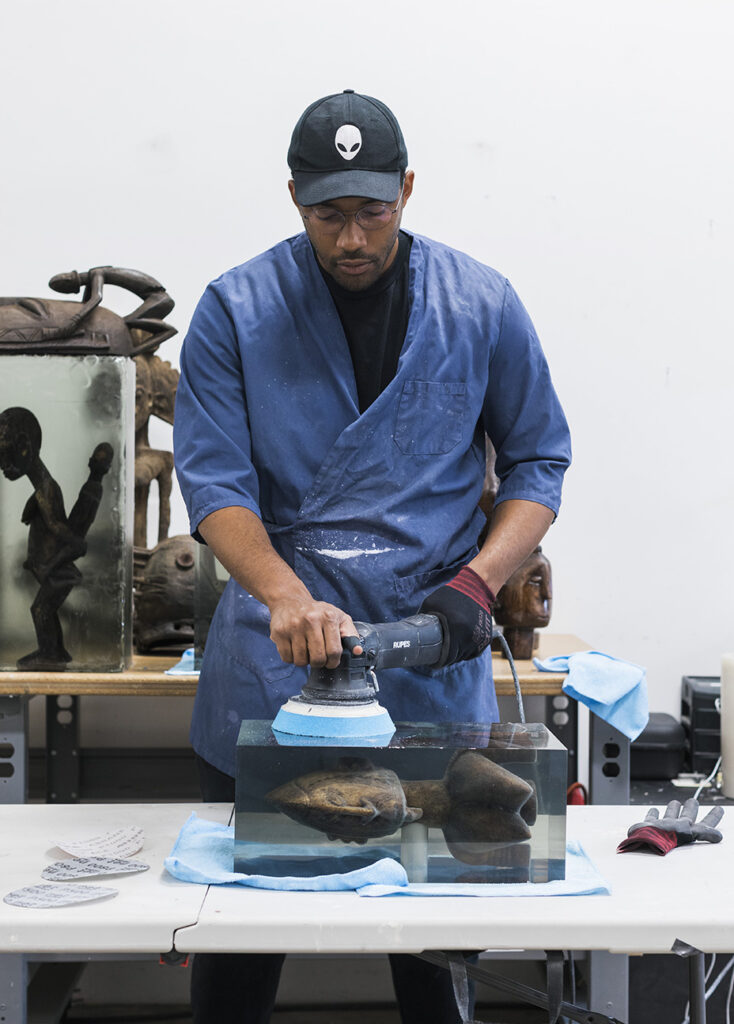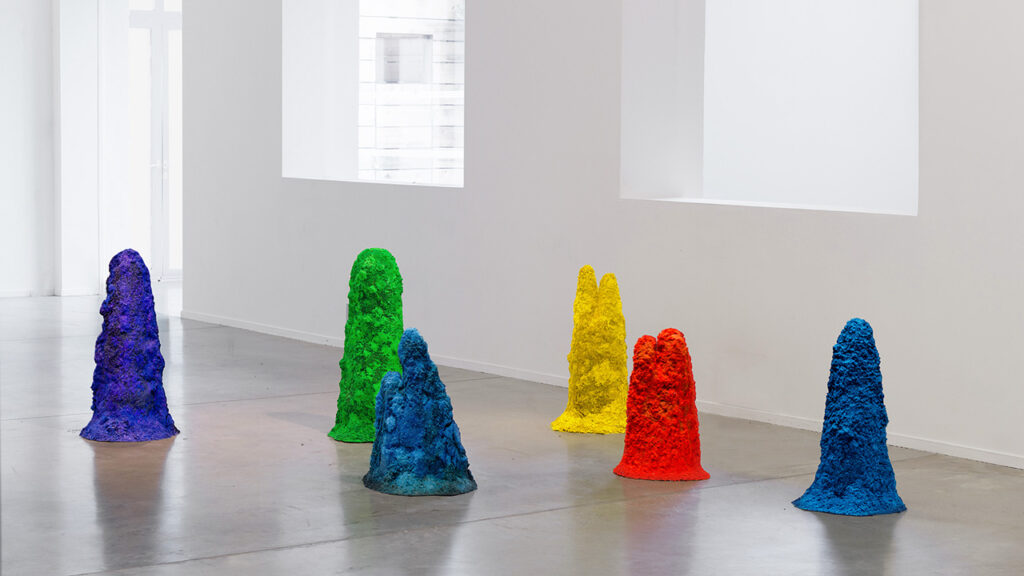In 1967, the Los Angeles County Museum of Art (LACMA) inaugurated a bold undertaking: its Art and Technology program. The initiative’s goal, according to its official brochure, was to “provide the necessary meeting ground for some eminent contemporary artists with sophisticated technological personnel and resources” — basically, to forge an “ongoing union between the two forces.” Over the next few years, the program would pair then-leading technology companies with some 70 artists, with the broad aim of creating works for the museum and the 1970 Osaka World Exposition. A running theme of Art and Technology though? Failure.
Perusing the 1972 report compiled at the conclusion of the program, you’ll find fruitful collaborations such as Claes Oldenburg’s partnership with Gemini G.E.L. to produce his mammoth Icebag or Andy Warhol’s adventures in 3D printing with Cowles Communication. But dotted heavily throughout as well are creative differences, dropped correspondences, and unrealized (or unrealizable) ideas that scuttled potential unions between Dan Flavin and General Electric, Walter de Maria and RCA, and Robert Morris and Lear Siegler, among many others.
“This is not a success story by any means,” Joel Ferree, the Program Director of LACMA’s Art + Technology Lab, tells Jing Culture & Commerce. “But there were kernels or seeds planted in those collaborations that changed the way these artists made art and viewed their role as artists.”
Lessons learned from those partnerships power LACMA’s current Art + Technology Lab, which (re)launched in 2014 with a similar, though refreshed mandate. Like its predecessor, the Lab performs matchmaking between tech players and contemporary artists to produce art on the cutting edge. Ferrying a lean four to six projects a year, it enlists the resources of companies from SpaceX to Snap to realize a vast array of works involving machine learning, 3D printing, robotics, extended realities, and more.

To make The Consequence of Platforms, Matthew Angelo Harrison is currently working with material scientists to develop a material that can be reconstituted for 3D printing of environments. Image: Claire Gatto, courtesy the artist and Jessica Silverman, San Francisco.
But unlike its late ‘60s forebear, the Lab actively fosters ideas, facilitates conversations, and encourages experimentation as part of the process, with a view toward diverse participants and themes. “We’re very interested in creating this space where artists can use these new tools without the pressure to output something for an exhibition,” says Ferree. As the program prepares to welcome its 2021 cohort, with a call for artist proposals now underway, Ferree shares more about the Lab’s mission, art and technology crossovers, and how technology can live in the museum space.
What does the Lab consider a successful Art + Technology project?
I think it’s where you see how an artist’s trajectory changes after their project, and how working in our program helped their career and helped them expand their practice. We want to create a space where the artist can freely experiment in a collaborative environment. We make introductions and provide various means of technological support in addition to financial support, allowing artists the time to experiment and take their work in a new direction.

Agnieszka Kurant’s Artificial Society / Collective Tamagotchi will feature sculptural forms that shape-shift with a live dataset, harvested by artificial intelligence neural networks from users from around the world. Image: Kurant’s A.A.I. (Artificial Artificial Intelligence), photographed by Aurélien Mole, courtesy the artist and Tanya Bonakdar Gallery, New York / Los Angeles.
Why is it vital for museums or artists to work with technology companies?
It’s really important to bring technology companies into the museum and a creative environment because it allows them to take the talent they have and rework it for different outcomes. These companies are the ones that have this technology and that are developing this talent; museums can’t do it. LACMA is a large institution, but we don’t have the technological firepower that, say, SpaceX does. When you bring [art and technology] together, it’s this intermediary space that allows everyone, including artists, to think a little differently. They’re in this experimental realm where all bets are off. There’s a lot more freedom in that.
What are some barriers for museums hoping to engage with technology?
It’s tricky because a lot of things can go wrong and you can end up wasting a lot of money on technology that is going to go nowhere. With a lot of technology, they appear at first as a flash in the pan and then you don’t really hear anything about them anymore. For a museum to commit to new technology, by the time they actually have an exhibition or large-scale public programming, the tech could be obsolete and the museum would look foolish. So what do you do? Technology changes so fast, but as a museum or a large institution, you’ve got to engage.
How can museums tackle that challenge?
I think programs like the Lab are important because we’re able to fail. We can take on an artist project using AR [augmented reality] — like what we did in our first year in 2014, when we set up AR stations throughout the museum — and see if it could be feasible on a museum-wide scale. Our main goal is not an exhibition, not this massive output; it’s more about process and documentation, so it’s a safe space for artists, technologists, and institutions to try out new things.



